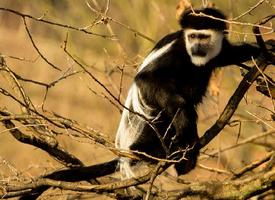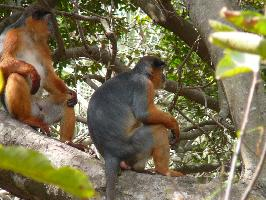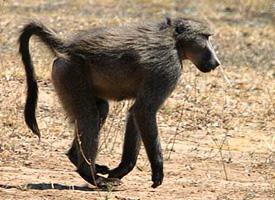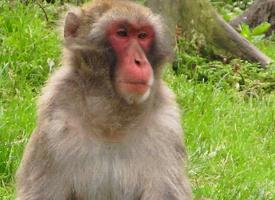
Cunoscut și ca
- Gueréza habešská
Greutăți și măsuri
| Lungime | de la 52 la 57 cm |
|---|---|
| Greutate | de la 8 la 13,5 kg |
| Lungimea cozii | de la 53 la 83 cm |
Date biologice
| Durata de viață | de la 12 la 23 ani |
|---|---|
| Durata gestației | 5 m |
| Numărul de pui | 1 |
Descrierea animalului
The Mantled guereza, scientifically known as Colobus guereza, is a strikingly distinctive and visually captivating species of Old World monkey that belongs to the Colobinae subfamily. This species is indigenous to various parts of Africa, spanning from Nigeria and Ethiopia down to Tanzania, inhabiting a wide range of forested areas including both primary and secondary forests, riverine and coastal forests, as well as montane and bamboo forests. The Mantled guereza's adaptability to different forest types underscores its ecological versatility.Characterized by its elegant and contrasting coloration, the Mantled guereza has a predominantly black fur that is sleek and glossy, creating a stark contrast with the long, flowing white mantle of hair that drapes gracefully over its shoulders and down its sides. This distinctive white fur, which gives the species its common name, also frames its face and covers its tail, presenting an almost ethereal appearance. The face of the guereza is a striking deep black, accentuated by small, round, inquisitive eyes that gleam with a sharp intelligence.
Adult Mantled guerezas are medium to large in size among the colobine monkeys, with males generally larger than females. They exhibit some sexual dimorphism, with males weighing between 9 to 14 kilograms and females slightly lighter. Their bodies are built for an arboreal lifestyle, with long, strong limbs and a powerful tail that aids in balance, allowing them to leap gracefully among the treetops. Their hands and feet are adapted for gripping, with opposable thumbs that are somewhat reduced in size, a characteristic adaptation among many leaf-eating primates that aids in their folivorous diet.
Dietarily, the Mantled guereza is predominantly folivorous, feeding mainly on leaves, along with fruits, seeds, and flowers. Their complex stomachs are well-adapted to ferment and break down the cellulose in leaves, a process that allows them to extract sufficient nutrients from their fibrous diet. This specialization in leaf-eating is a significant ecological role, as it influences the composition and health of their forest habitats.
Socially, Mantled guerezas live in cohesive groups typically consisting of several adult females, one or two adult males, and their offspring. These groups are highly social, with complex interactions and relationships among members, including grooming, play, and communal care of the young. Vocal communication is also an important aspect of their social behavior, with the guerezas using a variety of calls to maintain group cohesion and warn of predators.
Speaking of predators, the Mantled guereza has a few natural enemies, including large birds of prey and some larger mammals like leopards. Their social structure and vigilant behavior help protect them from such threats. Additionally, their contrasting coloration may serve as a form of camouflage in the dappled light of their forested environments, breaking up their outline among the leaves and branches.
Conservation status of the Mantled guereza varies by region, but habitat destruction and fragmentation due to human activities pose significant threats to their populations. While some areas have stable populations, others are in decline, highlighting the need for continued conservation efforts to ensure the survival of this remarkable species. Through habitat preservation and increased awareness of their ecological importance, there is hope for the future of the Mantled guereza across its range in Africa.
Animale similare
Fotografii noi cu animale
Top 10 animale
- Dolphin gull (Leucophaeus scoresbii)
- Diana monkey (Cercopithecus diana)
- Moustached guenon (Cercopithecus cephus)
- Galápagos tortoise (Geochelone nigra complex)
- Japanese macaque (Macaca fuscata)
- Stone loach (Barbatula barbatula)
- Russian tortoise (Testudo horsfieldii)
- Greek tortoise (Testudo graeca)
- Common flying dragon (Draco volans)
- Vendace (Coregonus albula)


